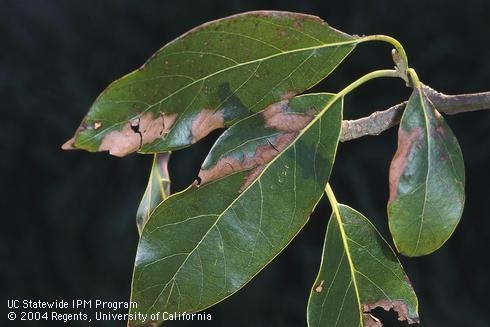- Author: Elinor Teague

Fungal problems on plants are usually short-lived here in the Central Valley. High temperatures and low humidity beginning in May quickly kill off fungal spores. We seldom see common fungal problems like powdery or downy mildews, rust or black spot after May.
Biological fungicides or biofungicides are gradually replacing a wide range of fungicides including chemically derived broad spectrum products, as well as least-toxic products such as copper and sulfur solutions, horticultural oils, neem oil and jojoba oils. Fungi are plant-specific and biofungicides have a long list of treatable fungi on many different plant species.
Biofungicides are formulated with naturally occurring living microorganisms, beneficial bacteria, that are found on plants or in the soil. Labels on biofungicides for home and garden use may not clearly indicate that the product is a biofungicide. The labels will show bacterial strains as the active ingredient. The two most common are Bacillus subtilis and Bacillus amlolyquefaciens.
The microorganisms are effective at controlling fungal pathogens in several ways: They out-compete fungus for nutrients and space, they trigger resistance in the host plant to the pathogen, they produce antibiotics or toxins that weaken or destroy the pathogen.
Biofungicides are organic products and can be as effective or even more effective in treating or controlling most of the common fungal problems in home gardens than can either broad-spectrum chemically derived or the least-toxic fungicides. They are less toxic than copper and sulfur products.
However, the use of biofungicides is not without problems. They are preventative rather than curative treatments. Great care must be taken to remove all plant debris and even soil from areas in the garden where plants have previously shown fungal problems. New transplants should be examined carefully for signs of fungal infestations and, if in doubt, the potting soil should be drenched with a biofungicide or removed and replaced with fresh, sterilized soil.
Application timing is easily thrown off by rain showers. I was unimpressed with the results of using a biofungicide last spring on Romano bean plants due to rain showers continuing well into April. Biofungicides, like other fungicides, should not be applied when rain is predicted, temperatures are above 90 degrees or on drought-stressed plants.
Because biofungicides are composed of living organisms, shelf life is reduced. Two home-and-garden-use biofungicide labels (Serenade and Monterey Complete Disease Control) do not provide use-by dates or storage temperature ranges. The UCONN IPM website does give that information for a range of biofungicides used in greenhouses and agriculture. Maximum use-by date ranges from 18 months to 3 years. Some formulations require refrigeration or have a maximum temperature. Information on whether those same restraints apply to home and garden use products was unavailable.
The same UCONN IPM article emphasizes the importance of wearing protective clothing and using caution when applying biofungicides. The two labels mentioned above are less emphatic in their recommendations.
Sources:
- CT IPM program, UCONN College of Agriculture, Health and Natural Resources, Biological Fungicides.
- UCIPM, Fungicides, Powdery Mildew on Vegetables
- UCANR, “Pests in the Urban Landscape', Biological Fungicides: Do They Work and Are They Safe?, Steven Swain, 2014, UC IPM Green Bulletin Newsletter.

